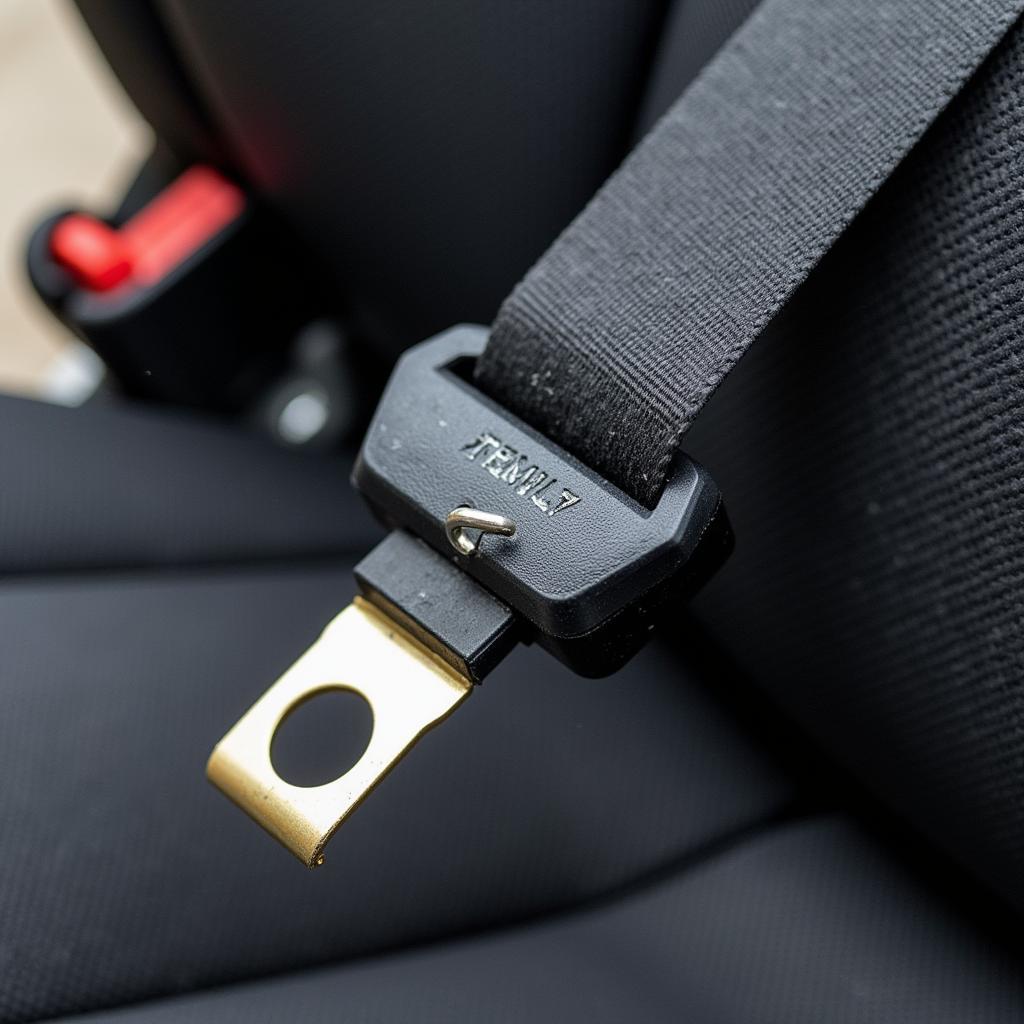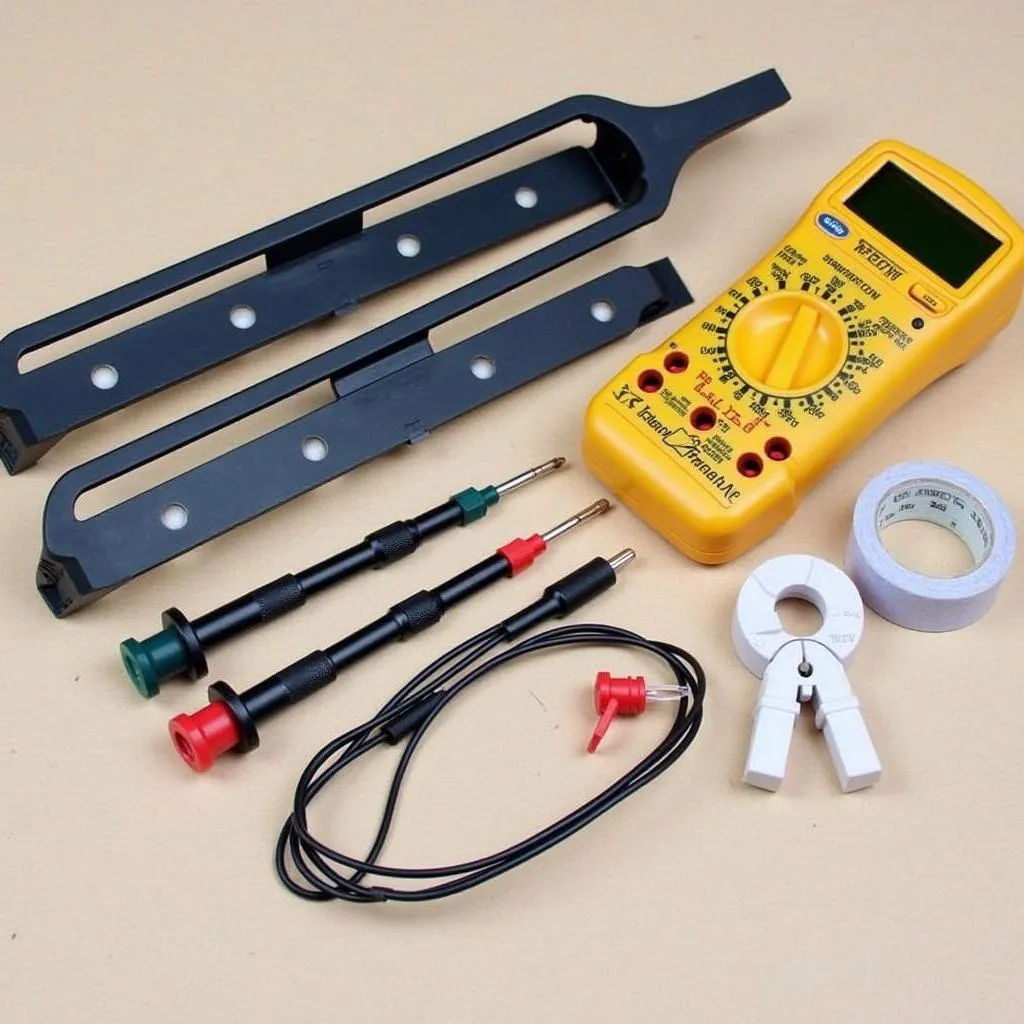A persistent seat belt warning voice in your Japanese car is more than just annoying—it’s a critical safety feature. But what does it mean when that familiar chime turns into a constant beep or voice reminder? This guide will explore the reasons behind a persistent Japanese car seat belt warning voice and provide practical solutions to address it.
Understanding the Seat Belt Warning System
Your Japanese car’s seat belt warning system is designed to encourage seat belt use, a crucial safety measure proven to save lives. This system comprises sensors, a control unit, and an audible warning system, usually a chime or voice reminder. When the ignition is on and the seat belt remains unfastened, these components work together to trigger the warning, reminding you to buckle up.
Common Causes of a Persistent Warning Voice
While the seat belt warning system is generally reliable, several factors can cause it to malfunction and lead to a persistent warning voice:
- Faulty Seat Belt Buckle Sensor: This sensor detects whether the seat belt is fastened. If it malfunctions, it might send a continuous signal to the control unit, triggering the warning voice even when the seat belt is buckled.
- Damaged Wiring: The wiring connecting the seat belt buckle sensor to the control unit can become frayed or damaged, leading to an intermittent or constant warning signal.
- Seat Belt Buckle Latch Issue: Over time, the latch mechanism in the seat belt buckle can wear out or become obstructed by debris, preventing the buckle from properly securing and triggering a continuous warning.
- Software Glitch: In some cases, a software error in the car’s control unit can cause the seat belt warning system to malfunction.
 Faulty Seat Belt Buckle
Faulty Seat Belt Buckle
Troubleshooting the Issue
Before heading to a mechanic, there are several things you can try to diagnose and potentially resolve the issue yourself:
- Check the Basics: Ensure the seat belt is fully fastened and the buckle is properly secured. Sometimes, a simple readjustment can resolve the issue.
- Inspect the Seat Belt Buckle: Examine the buckle and the latch for any visible signs of damage, debris, or obstructions. Try cleaning the buckle with compressed air to remove any dirt or debris that might be interfering with its function.
- Check the Seat Belt Warning Light: Observe if the seat belt warning light on your dashboard is illuminated even when the seat belt is fastened. If it remains on, this further suggests an issue with the warning system itself.
- Consult Your Owner’s Manual: Your car’s owner’s manual contains valuable information specific to your model, including detailed instructions on the seat belt warning system and troubleshooting tips.
Seeking Professional Help
If the problem persists despite your troubleshooting efforts, seeking help from a qualified mechanic specializing in Japanese vehicles is recommended. They can diagnose the issue accurately using specialized diagnostic tools.
“When dealing with a persistent seat belt warning voice, accurate diagnosis is key,” says Master Technician Hiroshi Sato. “Using the right tools, we can pinpoint the source of the problem—be it a faulty sensor, wiring issue, or software glitch—and implement the appropriate solution.”
Remote Diagnostics and Software Solutions
In our digitally advanced age, remote diagnostics and software solutions are becoming increasingly prevalent in automotive repair. For certain software-related issues triggering the seat belt warning, remote access programming might provide a convenient and efficient solution.
“Remote programming allows us to access and update your car’s software remotely, potentially resolving glitches that might be causing the seat belt warning issue,” explains Sato. “This eliminates the need for a physical visit in some cases, saving you time and potentially reducing repair costs.”
Addressing the Warning Voice Promptly
Remember, the seat belt warning system is there to protect you and your passengers. Ignoring a persistent warning voice could mean overlooking a potential safety hazard.
“While a malfunctioning seat belt warning system can be frustrating, addressing the issue promptly is crucial for ensuring your safety on the road,” emphasizes Sato. “Always prioritize safety and seek professional assistance if needed.”
FAQs
1. Can I disconnect the seat belt warning voice myself?
While it is technically possible to disconnect the warning system, it is highly discouraged. Doing so not only compromises your safety but might also be illegal in some areas.
2. How much does it cost to fix a seat belt warning voice issue?
The repair cost can vary depending on the underlying cause. A simple sensor replacement might be relatively inexpensive, while a more complex wiring or control unit issue could be more costly.
3. Is it safe to drive with a persistent seat belt warning voice?
While the car itself is likely safe to drive, the underlying issue causing the warning could pose safety risks. It’s best to have the problem addressed promptly.
4. Can a car battery issue cause a persistent seat belt warning?
While less common, a weak or failing car battery can sometimes disrupt the function of electronic systems, potentially including the seat belt warning.
5. How often should I have my car’s seat belt system inspected?
It’s generally a good practice to have your car’s safety systems checked during routine maintenance or if you notice any warning lights or unusual behavior.


